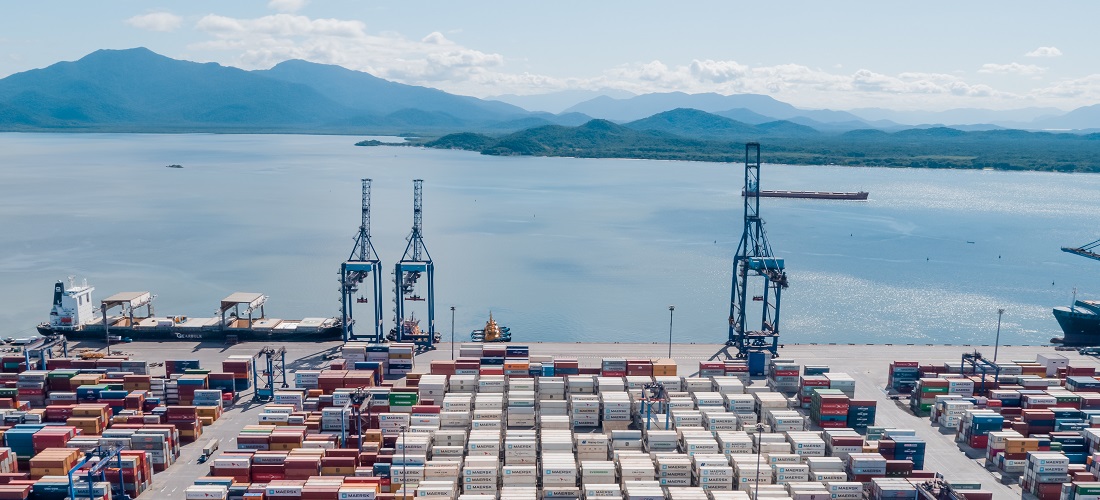
Economy showing signs of recovery, but there is still a long road ahead
Sep, 30, 2020 Posted by Ruth HollardWeek 202040
Covid-19 has wreaked havoc not only on the health and day-to-day livelihood of Brazilians and the populations of other countries of the Plate but also on the economy. DataLiner information shows that in comparing container volume handled in the region in the period from January to August in the last three years (import plus export), a fall of 3.39% was registered in 2020 in relation to 2019, and a fall of 3.99% was registered in relation to the same period in 2018.
Comparison of Container Handling from Brazil and Plate – Jan to Aug 2018 to 2020
Source: DataLiner
But did the economy hit bottom in June and is it now beginning to recover? To answer this question, the DatamarNews team collected strategic data from DataLiner, which reports the maritime foreign trade numbers for the region.
DataLiner information indicates that exports via container from Brazil and the Plate continue to grow. In August, the volume was 5.50% higher than the same month of 2019.
Exports Via Container from Brazil and the Plate – Jan to Aug 2019 and 2020
Source: DataLiner
Imports have fallen. Imports via containers in the region fell 23.29% in August compared to the same month of 2019. Even so, they grew 14.43% in relation to July 2020.
Container Imports from Brazil and Plate – Jan to Aug 2019 and 2020
Source: DataLiner (To request a DataLiner demo click here)
Perspectives
Although slow, the above figures indicate an economic recovery as a result of the loosening of Covid-19 social-distancing measures. In general, the Brazilian population is more confident. The Brazilian Economy Uncertainty Indicator (IIE), measured by the Getúlio Vargas Foundation (FGV) and released on September 30, fell 14.5 points in September to 145.8 points. It is the fifth consecutive fall, although it showed strong increases during the beginning of the COVID 19 pandemic, rising 52 points in March and 43.4 points in April.
“The result reflects evidence of a solid return to economic activities and the continuation of the relaxation movement of social-isolation measures imposed by the Covid-19 pandemic. Despite the improvement in the month, the indicator is still 9 points above the maximum level before the pandemic, reached in September 2015”, said Anna Carolina Gouveia, an economist at FGV.
Industrial activity
A survey released by the National Association of Motor Vehicle Manufacturers (ANFAVEA) points out that the month of August registered the best numbers since the beginning of the Covid-19 pandemic, which proves, for the entity, that the most acute crisis was limited to the second quarter. Compared to July, auto production in August grew by 23.6% (210,900 units), licenses grew by 5.1% (183,400), and exports fell by 3.4% (28,100).
However, when compared with the volumes of August of last year, these three numbers registered declines of more than 20%, still indicating a long road of recovery ahead to pre-pandemic levels. In the first eight months, the comparison is even more unfavorable. Licenses dropped 35%, exports shrunk 41.3% and production plunged 44.8%, repeating volumes similar to those of almost twenty years ago. “It is as if we lost three months of internal sales and almost four months of production”, analyzes Luiz Carlos Moraes, president of ANFAVEA. “If it weren’t for the pandemic, by mid-May we would have reached the levels reached at the end of August,” adds Moraes, showing the size of the losses in the automotive sector.
August job creation
Another positive factor indicating that the worst is over is the creation of jobs. Data released by the General Register of Employed and Unemployed (CAGED), the Ministry of Economy’s Labor Secretariat, shows that for the second month in a row, the country created formal jobs. In August, 249,388 formal jobs were opened. The indicator measures the difference between hiring and firing.
This was the most positive result for the month of August since 2011, when 190,446 formal vacancies had been opened. In the accumulated result for the year, however, the labor market continues to feel the impact of the pandemic. From January to August, 849,387 vacancies were closed, the worst result for the first eight months of the year since the beginning of the historical series, in 2010.
Despite the positive indications, there is still a lot of work to be done by the government and other sectors of the economy in order to return to the pre-crisis level.
-
Oct, 03, 2021
0
Minister of Finance defends strengthening relations with the Middle East
-
Ores
Mar, 18, 2019
0
Vale redirects vessels from the Southwest of Brazil to São Luiz, while more mining activities are suspended
-
Trade Regulations
Aug, 06, 2024
0
Minister of Agriculture signs MoU for agricultural cooperation with Chile
-
Trade Regulations
Jan, 29, 2025
0
Opening of Agricultural Markets in the United States

